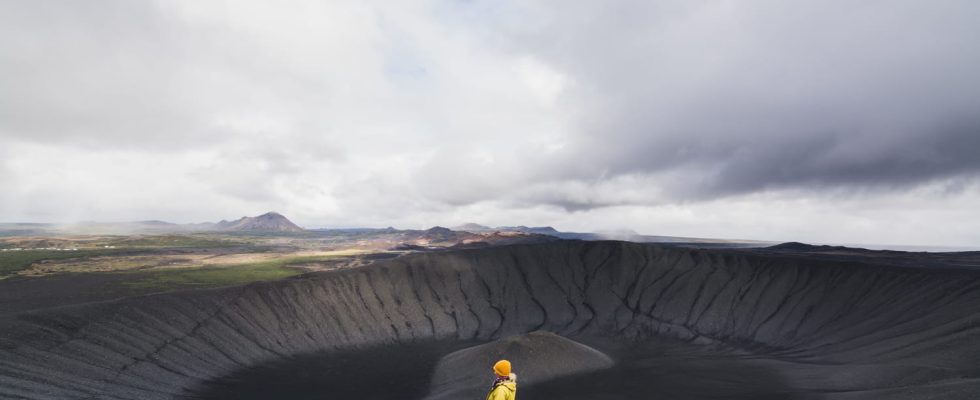A volcanic explosion recently destroyed fishermen’s houses in Iceland. This phenomenon would mark the awakening of a fault that has been dormant for 800 years.
On January 14, several houses in Grindavik, a fishing village on the south coast of Iceland, were ravaged by lava flows from the Sundhnjukagigar volcano. Fortunately, this phenomenon caused no casualties, the damage was material. The event had been predicted a few weeks earlier, allowing the evacuation of the population on time. The eruption also forced the closure of the Blue Lagoon, one of the region’s most popular tourist spots. In December, a first eruption had already taken place but its intensity was less significant.
According to experts, this event marked the awakening of a fault that had been dormant for 800 years: the Mid-Atlantic Ridge. This underwater fault is located in the middle of the Atlantic Ocean and to a lesser extent crosses the Arctic. It marks the boundary between the North American plate and the Eurasian plate in the North Atlantic Ocean and between the South American plate and the African plate in the South Atlantic.
Thus, “after eight centuries of relative rupture and complete cessation of surface activity, we have entered a new episode of plate separation which could last several years, even several decades”, declared to AFP the volcanologist Patrick Allard of the Institute of Globe Physics in Paris. This separation enlarges the Atlantic by several centimeters each year and further distances Europe from the American continent.
According to the Icelandic Meteorological Office, responsible for monitoring seismic and volcanic activity, magma has seeped into fractures in the earth’s crust which is very thin around the fault. It is this infiltration which caused the eruptions.
Since the two eruptions, the office remains on permanent alert. Although there is still a lack of information to make precise forecasts, scientists from the meteorological office estimate that a new eruption could take place in a few weeks.
Indeed, the risk is present since the magma would continue to accumulate under the Reykjanes peninsula, a few kilometers from Grindavik. In addition to the village, the Svartsengi geothermal power plant, providing water and electricity to the region, could in turn be threatened given its proximity to the volcano.
However, what is most worrying is that this next eruption could be difficult to anticipate, making it impossible to give the alert in time. With consecutive eruptions, the magma finds its way to the surface more and more quickly. Thus, preventive seismic activity is reduced. Experts estimate there could be less than an hour between fissure, warning and eruption.
